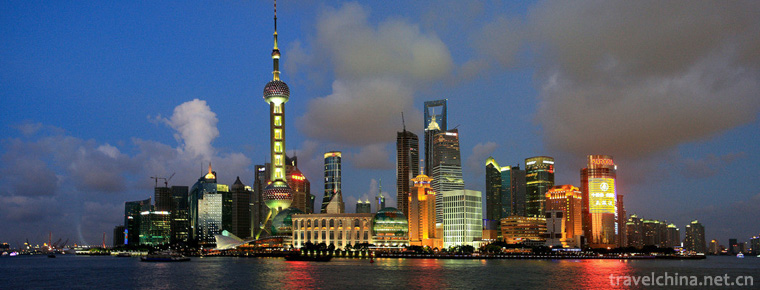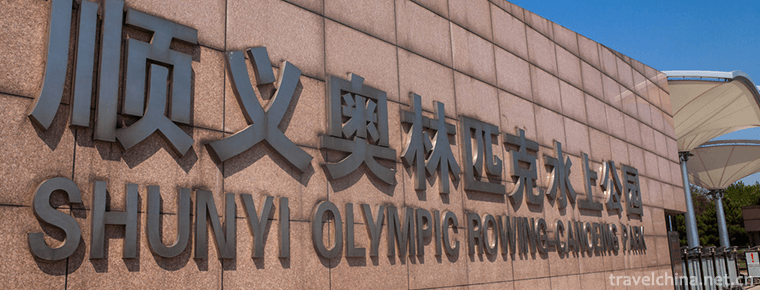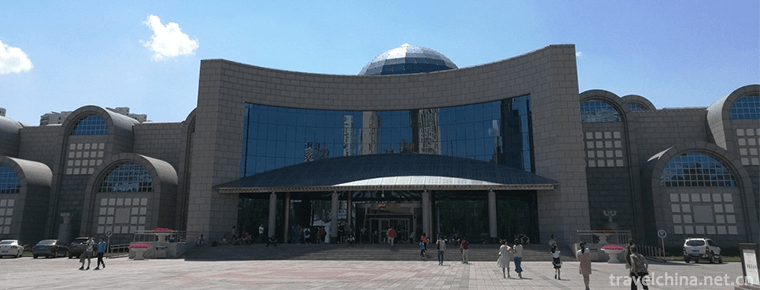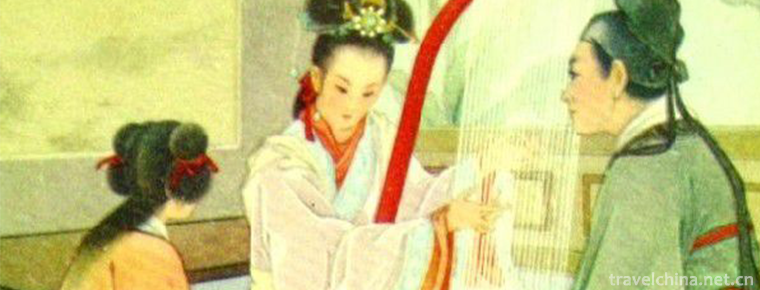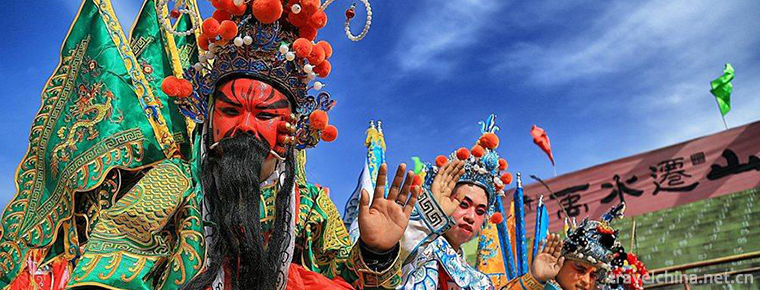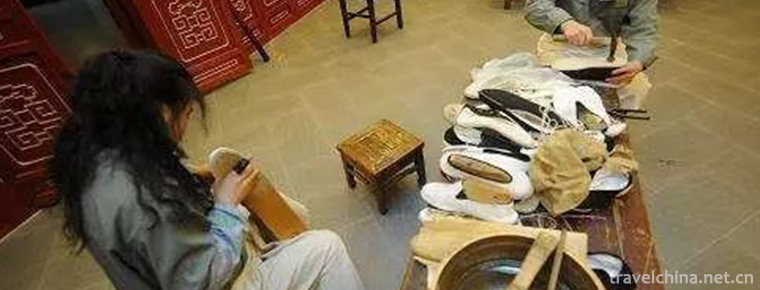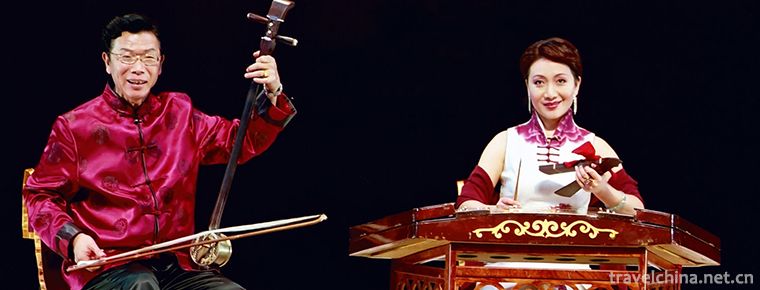ivory carving
ivory carving
Ivory carving refers to the carving process and its products with ivory as the material. It is an ancient Chinese traditional art, folk arts and crafts. Ivory is the strongest part of an elephant. It is as clean as jade, durable and precious as gemstone, so it has the reputation of "organic gemstone". Ivory carving works of art, with solid and fine, soft and smooth texture, exquisite carving art, are highly cherished by collectors, and become one of the unique varieties of antiques.
On May 20, 2006, ivory carving was approved by the State Council and listed in the first batch of national intangible cultural heritage list.
Historical Development
Chinese ivory carving has a very long history, which began in the Neolithic Age. As early as the Paleolithic Age, the cave dwellers in Zhoukoudian were buried with ivory carvings as decorations. "History of Weizi Family" has recorded: "The beginning of the Yi Dynasty is like a hairpin." The emperors of Liao, Jin, Yuan, Ming and Qing dynasties all used Ivory as Royal offerings. The orchard factories of Ming Dynasty and the establishment offices of Qing Dynasty all made ivory products for the palace. The most representative one was the famous ivory work "Yueman Qingyou".
After thousands of years of development, Chinese Ivory sculpture in the mid-Qing Dynasty gradually formed a number of relatively centralized production centers, mainly represented by Guangzhou, Suzhou and Beijing. The central production areas not only maintain the style and characteristics of different places in subject matter and form, but also penetrate each other and exchange in technology. After the 1970s, with the convenient transportation and the development of information technology, dental carving artists from all over the world frequently communicate with each other, learn from each other's strengths and make up for each other's weaknesses. On the one hand, the color of local dental carvings in different regions is increasing, forming four major regions: Beijing, Guangzhou, Shanghai and Nanjing. On the other hand, Tianjin, Fuzhou, Yueqing and other places. On the one hand, the style between them is gradually weakening, which is an inevitable trend. Guangzhou is the representative of the exquisite and exquisite Guangzhou dental carving, so it is called Guangzhou dental carving. Beijing dental carving has a graceful and luxurious palace art character.
Since the 1980s, elephant populations have been protected. On the issue of saving endangered species, the international community has begun to abandon the rigid trade ban and allow the stock of ivory trade. In this way, the supply of ivory raw materials has shown a new vitality. However, both from the human and financial point of view, Beijing's ivory carving technology has entered an endangered situation. After China stopped importing Ivory directly from Africa on June 1, 1990 and banned international trade in ivory and its products in 1991, no commercial import of ivory was approved. In the case of prohibition of ivory raw materials led to the rise of ivory collection, ivory carving is in the prohibition of silence in constant appreciation. Ivory carving, bamboo carving and wood carving are the three main categories of traditional carving technology. Ivory has always been regarded as white gold and is cherished by connoisseurs for its solid, fine, soft and smooth texture.
With the ban on the trade of target teeth and the urgent need for raw materials of ivory products, the number of dental carving crafts sells very little. With the consumption of the market, the surviving fine dental carving products will become more and more rare. Therefore, for a period of time, the price of ivory crafts has risen by 100%, and the art of tooth carving has been enthusiastically sought after by collectors.
Types of dental carving
Generally speaking, ivory carving art is divided into four categories: characters, animals, flowers and landscapes. Among them, the theme of tooth carvings mainly originated from ancient myths and legends and historical celebrities. Classifications can be divided into ladies, Arhats, Buddhists, warriors and historical figures. Character sketches generally use the method of white sketch to show the facial expression, body posture, shape of clothing, etc. They have their origins, but also focus on the characterization of the characters, in order to achieve the perfect artistic effect. Tooth carving flowers are generally flower-based, with birds, butterflies, dragonflies, frogs as the backing, carving like peony, rose, chrysanthemum, magnolia, green peach, pine, bamboo, plum and so on. The overall shape of supporting parts has flower baskets, vases, bamboo tube, folding fan, rockery and so on, playing a very good role in matching the protagonist with the backing body. The main subjects of dental carving are tiger roaring in forest, lion roaring in deep valley, cock announcing dawn, fish leaping lotus pond and so on, among which the twelve Zodiacs occupy a certain position in the art of dental carving. Landscape themes in dental carvings generally represent landscapes, islands and clouds of the sun and moon. Craggy rocks, mottled sea rocks, rolling clouds are dental carvings
Skills and Styles
Ivory carving techniques are diverse, round carving, shallow relief, high relief and carving, which are widely used in Ivory carving.
Round sculpture, generally using the whole section of ivory as the sculpture, sculpture body shape. This technique of expression requires the sculptor to have skilled skills and rich imagination and creativity. Generally, some tabletop decorations and human statues adopt this technique of expression. The round sculpture figures of the Qing Dynasty, whose style is slightly cumbersome, have paid more attention to the depiction of pleats and increased texture. The tooth carving "holding the Scriptures and Guanyin", holding the Scriptures and sitting with eyes closed, reflects the pure and dignified and compassionate moral demeanor of Guanyin Bodhisattva. Although the sitting statue is small, it pays special attention to the depiction of clothes and lines. The knife method is fluent but slightly thicker, which is quite different from the style of dental carvings in Ming Dynasty.
Embossment is a kind of carving method of three-dimensional level on the surface of flat materials. It has obvious hierarchical relationship and semi-three-dimensional effect on the shape. Relief is a widely used form of sculpture, which can be divided into shallow relief and high relief. Shallow relief is a kind of plane sculpture, which is lower than high relief and higher than thin Diyang inscription. But it has obvious sense of hierarchy. Most Ivory sculptures use this method. High relief is a kind of semi-stereoscopic sculpture form, which is between circular sculpture and plane sculpture. It has a strong sense of space. For example, the toothcarving pen holder for fishing and woodcutting can be used to make landscapes, fishing and shepherd children with high relief method. The picture is three-dimensional on the plane, and the relief effect is very prominent.
After Ming and Qing Dynasties, bamboo carving art was extremely prosperous, bamboo carving techniques were more used in dental carving technology, and some famous bamboo artists joined in dental carving technology, which enriched the technology of dental carving technology. For example, bamboo wool carving method was applied to dental carving technology, Ivory objects of Ming Dynasty, such as stationery, wine chips, etc., carved text on the painting, mostly wool carving method. Now hidden in the Palace Museum, "Suihan Sanyou" pattern pencil holder is Mao carving bamboo, plum, orchid, stone, fine-grained as a hair, the picture is compact and not crowded. He also carved a seven-character poem in regular script: "Ask me what to do to live in Bishan, and laugh without replying to idleness." Peach blossoms are disappearing, and the world is not human, full of literary flavor. The pencil barrel of "Songyin Cewang Picture" imitates the method of bamboo carving and shoveling the ground, scraping away the pattern, making the main pattern slightly higher than the plane, and then carving on it. This method is called "thin Diyang Wen" and "bottom-reducing method". This belongs to the technique of masculine engraving, but also combined with masculine engraving. For example, when carving characters, first make the outline by this method, and then carve the face by the method of sun-engraving on the outline surface.
As early as the Yuan Dynasty, ivory carving was widely used through carving techniques. Through carving, drawing and carving according to the design pattern on the flat material, then combining with relief technique to carve, forming the exquisite beauty. The maturity of carving laid the foundation for the reproduction of carving.
Carving generally requires comprehensive use of carving, carving skills can be achieved. The technique of carving already existed in Song Dynasty, which is suitable for carving ivory ball. Ivory ball was called "Ghost Work Ball" in ancient times. During Qianlong period, the ivory ball had developed to 13 layers of carving. The carving process is extremely complex, which requires artists to have superb technology and quality to complete. The process of making ivory ball is as follows: firstly, the Sawyer opens the material, secondly, the lathe turns the ball into a ball, then the car turns into several layers which rotate freely inside and outside. Then, the carver carves the pattern on the outermost layer of the tooth ball on the "plate surface". The chisel chisels the inner layer into various fine patterns one by one. Finally, the grinder turns bright and matches the upper teeth ball seat to become the finished product. Dental ball technology developed greatly in the Qing Dynasty. It originated in Guangzhou and was a common technique in Guangzhou's ivory carving.
By the Qing Dynasty, hollow carving was not only used for processing and making ivory balls, but also widely used for decoration of other dental carvings and ornaments. At the same time, the combination of carving and relief became the characteristics of small objects carving in the Qing Dynasty.
In the Qing Dynasty, the technology level of dental carving was very high and the technique was perfect, but it also made the dental carving in the Qing Dynasty tend to be complicated gradually. Making and decorating fine and slightly trivial, which is the general trend of the Qing Dynasty dental carving technology, although fine and gorgeous sculptors, but also slightly complicated, especially in modern times. For example, carved figure tower bottle, composed of multi-layer pagoda-shaped roof, the top of the button form, uncovered as a cavity, on both sides of each animal Title ring ears, concave bottom, plus plum wood inlaid silk base. The round body of the bottle is carved through six layers, with the exception of three layers of dark eight immortal patterns, the remaining layers of figures, including eight immortals and eighteen Arhats, with more than a hundred people, and their expressions are different. In each layer, the main lines are separated by palindromes, diamonds or lotus petals, which gradually makes the picture layer thicker and thicker.
Another unique skill, ivory knitting, was greatly developed in the Qing Dynasty. It was made by splitting ivory, polishing it and then knitting it. Ivory splitting technology existed in the Han Dynasty and has never been interrupted since then. Wire splitting is the most critical process in knitting. It makes use of the fine texture and toughness of ivory, immerses ivory in a special medicinal liquid. After softening, it splits into thin, narrow and uniform sheets. The sheets are weak as paper and translucent. Then it polishes and polishes the sheets smoothly, showing white luster, and then weaves them. Ivory mat, palace fan and so on. Due to the limitation of climate conditions, this technology was seldom used in the north, and Guangzhou became the main producer of ivory weaving. The technology is time-consuming and the value of the manufactured product is quite expensive. In the Yongzheng Dynasty, Emperor Yongzheng felt that its production was laborious and harmful to the people, but its function was only to fight for luxury and wealth. He banned the production of dental silk products. From then on, the technology gradually declined until it was lost. Ivory has good thermostatic properties. Compared with the mat made of bamboo, grass and other materials, it is smaller and more cool and pleasant. Ivory woven mats, two extant ones, are hidden in the Beijing Palace Museum.
major schools
In the course of thousands of years'development and spread of ivory carving in China, a number of relatively centralized central production areas have been formed. In the Qing Dynasty, Guangzhou, Suzhou and Beijing were the main representatives. There were technological exchanges among the production centers, and the themes and forms of these centers maintained the style and characteristics of different places, while infiltrating into each other.
Guangzhou Dental Carving
Guangzhou dental carving technology has a long history, full of decorative, known for its fine and neat, exquisite and exquisite. After the Kangxi Sea Ban in the Qing Dynasty, Guangzhou became the only port for foreign trade. This unique position led to a large number of ivory imported into Guangzhou from Southeast Asia and other places, which provided sufficient raw materials for dental carving technology. Since then, Guangzhou's toothcarving technology has far surpassed other places and become the top of the country. At the same time, it has formed its own style and characteristics, which is different from the artistic style of Suzhou, Beijing, Yangzhou, Hangzhou and other places, and has had an impact on the toothcarving technology of other places.
Guangdong dental carving, also known as the Southern School of dental carving, focuses on the carver, and pays attention to the bleaching and color decoration of dental materials. Most of the works are beautiful, exquisite and exquisite. According to the technology, Guangzhou dental carving has three categories: carving, inlaying and weaving. Sculpture mostly uses engraving, concealment, protrusion, carving, the best carving, mainly with Guangzhou's unique climate conditions are inseparable. Guangzhou's climate is warm and humid. Ivory is not easy to crack. It is suitable for making works of drilling and carving. With the original technology level, carving has gradually become the most distinctive technology of Guangzhou's dental carving. Varieties include ivory balls, picture bowls, characters, pen holders, screen inserts, birds and animals and other appreciations, chopsticks, combs, stamps, snuff bottles, bottles, cigarette holders, lamps, powder boxes and other daily necessities. Ivory ball is the most famous basement. Ivory carving and many other materials, such as rosewood, rhinoceros horn, tortoise shell, jade feather, etc., are ingeniously embedded in one device, making the pattern more three-dimensional, increasing the level of the pattern, which is a remarkable feature of Guangzhou's dental carving technology.
In order to meet the needs of export, Guangzhou dental carving style tends to be realistic, and absorbs the advantages of large rolled leaves, realistic flowers and other foreign patterns, and is characterized by dyeing and spiral connecting parts. Towards the late Qing Dynasty, the style of Guangdong dental carving was delicate and cumbersome, and gradually declined.
Suzhou Dental Carving
Suzhou dental carvings (including Nanjing, Jiaxing, Hangzhou, Yangzhou and other places located in the south of the Yangtze River) have a long history. They were initially scaled in the Tang and Song Dynasties and formed a certain style. The arts and crafts in Suzhou have a long history, high level and various techniques, which reached its peak in the Ming and Qing Dynasties. Tooth carving technology and other carving technology continue to blend and infiltrate, and absorb other processes in the shape of patterns, techniques, coupled with many other categories of sculptors also directly involved in the process of tooth carving, for the new development of Suzhou tooth carving technology provides a factor that can not be ignored. Suzhou has an inherent tradition and a relatively cultural atmosphere. Suzhou dental carving has always maintained the characteristics of southeast regional culture.
Suzhou area is the economic and cultural center of Ming and Qing Dynasties. Traditional culture is profound. Especially the painting arts of Wu School, Yushan School and Loushan School also have an important impact on dental carving. Therefore, Suzhou dental carving has been full of rich cultural atmosphere. The overall style of Suzhou dental carving is elegant and mellow. Artists are good at using concealed technique to display their skills on the surface of their concealed adaptation. They have vivid images, remote artistic conception, clear and appropriate layout and give people a sense of comfort and quiet. Its details are handled very skillfully. The knife method generally adopts smooth shallow relief, engraving, round relief and high relief. The knife is powerful and concise, and polishes smoothly and brightly. There are many subjects, such as figures, flowers, birds and beasts, landscapes, myths and legends. The pursuit of artistic conception is obviously influenced by literati paintings in Ming and Qing Dynasties.
Suzhou tooth carving absorbed the characteristics of bamboo carving, painting and other traditional arts. Landscape painting works have the style of traditional Chinese painting. The images of women and children imitate meticulous brushwork. Flowers have the temperament of Yunnan Tiantian School in the early Qing Dynasty. All kinds of patterns are ancient and fragrant. They have a clear, beautiful and wild style. In sculpture, Suzhou's toothcarving techniques imitate bamboo carving, the landscape pursues the layout and grazing of Wumen School and Four Kings School, while the figures, flowers and animals imitate the effect of meticulous brushwork, striving to attach importance to the temperament of flowers and birds of Yunnan School in the early Qing Dynasty (Yunnan Tian, one of the six schools in the early Qing Dynasty), which has the style of ancient elegance, wild recreation and beautiful.
Beijing Dental Carving
Beijing toothcarving has a history of more than 2000 years. Ivory combs have been found in the tombs of the Warring States Period unearthed in the Loess Slope of Beijing. The emperors of Liao, Jin, Yuan, Ming and Qing dynasties all listed Ivory as Royal tribute. The orchard factories of Ming Dynasty and the establishment offices of Qing Dynasty all made dental carvings for the palace.
The Ivory List "Yueman Qingyou" was carved by the artists Chen Zhengzhang, Chang Zheng, Gu Pengnian, Chen Guanquan and Xiao Hanzhen in Qianlong Dynasty according to the paintings of Chen Zheng. There are 12 paintings, reflecting the changes of natural scenery in 12 months of a year and the life scenes of imperial concubines and women in palace bracelets. The works are mainly made of ivory, supplemented by precious stone materials such as jade. They are ingenious in conception, skilled in technique, vivid in characters and beautiful and harmonious in scenery. They have reached a very high artistic level. The works of this period include dragon boats, pavilions, Buddhas and the pages of The Romance of the Western Chamber.
Early and middle Qing Dynasty. As the Ministry of China, rich officials and dignitaries live in Beijing, which provides conditions for the emergence of dental carving. At the same time, the influx of foreign dental carving craftsmen provides technical support for the development of dental carving technology. Beijing's toothcarving is famous for carving characters, flowers and caterpillars, especially for carving characters. Artists can make full use of the delicate and tough characteristics of ivory texture to accurately express the dynamic and emotional characteristics of the characters. The proportion is coordinated, the composition is beautiful, the characters are vivid, lifelike, and the carving is precise and delicate. Common local color and ivory color form a sharp contrast, making the product more vivid and colorful. In fact, Beijing dental carving is not a school of dental carving, but a product of the continuous integration of the styles of dental carving in Guangzhou, Suzhou and Beijing.
Many dental carvings in the Qing Palace can not be carved arbitrarily according to the characteristics and styles of the craftsmen themselves, but in line with the preferences of the Royal family. The sample manuscript produced by the toothmaker can only be carved after the emperor has personally examined it, and can not be modified without authorization. In the process of sculpture, dentists are careful, on the one hand, to play their own strengths and strive for the best results. On the other hand, according to the emperor's will, we should accept the strengths of all factions in order to conform to the emperor's taste. Beijing dental carvings are mostly small objects, usually stationery articles and ornaments, etc. In the late Qing Dynasty, there were also large pieces of works, mostly three-dimensional round carvings, with fine knife work, rounded knife method and vivid shape. Beijing dental carvings are mainly for bureaucrats, pursuing exquisite and gorgeous style, which may be influenced by the court. The general style of palace dental carving is "elegant, beautiful, exquisite and ingenious", which requires simplicity and elegance in shape and fine, moist and smooth polishing in technology. The creation of palace tooth carvings reached its peak in the Qianlong period. Especially in the late Qing Dynasty, the palace tooth carving gradually declined. In the production is very rich, the style is also trivial, not to mention the artistic conception, only in technology than the previous generation has made progress.
In Beijing, there is a kind of dental carving known as the office style. Establishment office dental carving, specifically refers to the dental carving made in the Qing Palace Establishment Office, which originated from the folk, but different from the folk. It was a kind of ivory workshop specially used by the imperial court during the Guangxu period of the Qing Dynasty. Under the oppression of feudal aristocracy and imperialist powers, Beijing faced extinction.
Thereafter, there were some ivory carving artists and some artists who specially decorated houses and buildings, repairing the old ivory carving crafts for antiques. At the end of the Qing Dynasty and the beginning of the Republic of China, there were more than a dozen such Ivory workshops in Beijing, mainly distributed in the upper and lower Tangdao alleys and Zhushikou areas south of Huashi Street. The most famous one is Geng Runtian (1890-1940). Geng Runtian is 49 Sanyangjing Hutong, outside the front door of Beijing. Geng Ji Ivory Sculpture Workshop was founded with a scale of more than ten employees and 78 apprentices. At that time, people called him Gengzi. He is good at carving three-dimensional round carvings, ladies and Arhats artistic attainments are also very high. According to his disciples, his works are "duty-free" when exported because of their good quality. In addition, there are Liu Cangshen who specializes in deep and shallow reliefs and Li Libao who specializes in making knife and horse characters. By the 1930s, some small artifacts and jade carving craftsmen had changed to carving ivory. At that time, there were 180 artists in dental carving, among whom Wang Bin, Yang Shihui, Cao Bin, Cui Huaxuan, Hu Fengshan, Li Hongyi, Deng Wenli, Ding Yuting and Tongyu Zhou were more famous.
After the founding of New China, under the care of the Party and the government, the artists who changed their professions returned to the team. In 1952, 13 handicraftsmen, Sun Zhiqing and others, established the Beijing Ivory Carving Production Co-operative, which is located at No. 19 Hutong for Studying Abroad and Huer Hutong near Zhushikou (Xuanwu District). The Council and the Board of Supervisors were established on 1 July 1953. The members of the Council are Sun Zhiqing, Yang Shihui, Wang Wenqing, Zhang Jun, Wang Guorui, and Sun Zhiqing is the director of the Council. Its members include Ma Lianyuan, Cui Huaxuan, Wang Xu and Zhang Dongsheng. In 1955, it grew to 132 members. By 1956, it had 187 members (including 7 non-members), 29,464 yuan of its own assets and 10,000 yuan of its fixed assets. The famous products produced include large dental carvings "Chairman Mao and Stalin", "Chairman Mao and Ho Chi Ming", "Qiangdu Jinsha River", "Jinggangshan Master", "Longevity Hill", "Beihai Panorama", "Hundred Flowers Blossom Basket" and so on. Three of them are on display at home and abroad. There was no party organization of the CPC in the early days of its establishment. In 1954, Chongwen District appointed a CPC member. In 1955, another CPC member cadre was appointed. In June of the same year, Sun Zhiqing, a CPC member, was developed. In October 1955, the Party branch of the First Ivory Carving Production Cooperative of the CPC in Beijing was established.
On January 13, 1956, Kouzhu Ying No. 1, Huashi Nanyang City, Chongwen District, consisted of 26 Individual handicraftsmen, a total of 45 people, forming the second Ivory production cooperative. In addition, there was a public-private joint-venture ivory carving factory with only 40 workers in Dongdan Foreign Ministry Street at that time. The management representative was Tang Jingye, a capitalist specializing in dental carving products.
On May 10, 1958, Beijing Ivory Sculpture Works was merged into Beijing Ivory Sculpture Works by Beijing Ivory Sculpture Production Cooperative I, II and Public-Private Ivory Sculpture Works. Later, the ivory sculpture factory sent some artists to Beijing Arts and Crafts Factory and Beijing Bone Products Factory.
Identification methods
Identification of Ancient and Modern
Ivory is divided into African ivory and Asian ivory. Both male and female ivory in Africa have teeth. Most of the teeth are pale yellow, with fine texture, good gloss and high hardness, but easy to crack. Asian mother elephants have no teeth. Asian ivory is white, yellowing and glossy over time, and its hardness is lower than that of African teeth. Ivory sculpture originated in the Neolithic Age. At that time, the sculpture of bone, horn and dental implements was very common. Some implements were carved with fine decorations. The Neolithic Chaoyang ivory carvings of Shuangfeng in Yuyao, Zhejiang, unearthed at the Hemudu site. It was a representative artifact in the South at that time. The Ivory cup with Turquoise animal face pattern and the ivory tube with animal face pattern unearthed from Fuhao Tomb of Shang Dynasty in Anyang, Henan Province, are the representatives of the ivory vessels of Shang Dynasty. Tang and Song dynasties also had many dental carvings unearthed, the craft is very exquisite.
By the Ming Dynasty, the new style of ivory sculpture had emerged. Like bamboo and wood sculpture, it had become a few cases of literati and elegant scholars'study.
Lack of furnishings and objects. Ivory carving in Ming Dynasty can be divided into two types: court carving and folk carving. The palace producers are exquisite and exquisite, and the decorations of figures and flowers and birds mostly imitate the brushwork. In the early Ming Dynasty, most of the dental carvings were decorated with dragon pattern, lotus pattern and Mantis pattern. In the middle and late Ming Dynasty, the decorations of plum, orchid, bamboo, chrysanthemum and pine figure pattern were mostly simple and elegant. The round statue of Buddha is an important theme popular in the early and middle Ming Dynasty. If I now have the Ming Dynasty Ivory Round Carving Guanyin sitting statue, 12 centimeters tall, yellow and broken lines, with ivory sharp head, sitting on the lotus platform. Facial plump, proportionally balanced, gentle lines of clothing carved very fine, can be called the Ming Dynasty tooth carving boutique.
Ivory sculpture in Qing Dynasty was the flourishing period of China's tooth sculpture. It inherited the style of Ming Dynasty and set up a special workshop for tooth sculpture in the palace. There are two major schools, Jiangnan and Guangdong. There are many kinds of works, ranging from fan bones, aromatherapy, flower arrangement, penholder, to flower bonsai, landscape figures, giant dragon boats, even a fencing screen. Its dental carving techniques in the south of the Yangtze River are the same as those of bamboo and wood carving, such as the handed-down square pen holder of dental carving landscape figures, the arm shelf of the dental carving Luohan crossing chart, the dental carving squirrel and Portuguel pen wash, the dental carving fishing music picture holder, etc. In the Qing Dynasty, the main pattern of tooth carving decoration was that emperors preferred and literati preferred. For example, Yongzheng prefers dragon pattern; for general literati, fishermen, fishermen, sages, landscapes, flowers and birds, grass worms, dressing boxes are famous; their skills are profound and ingenious. Dentists in Beijing mostly focus on ancient dress ladies, landscapes, characters and flowers and birds. They use traditional works such as penholders, small inserts, arm shelves and so on.
Basic Points of Ivory Identification and Preservation
Ivory is an organic gemstone, and it should be kept away from acid and alkali just like red coral and pearl. The environment should not be too cold and overheated, too dry, but also to avoid direct sunshine, otherwise the ivory is liable to crack and yellowing. Apart from the storage factors, the natural yellowing of ivory is a sign of the age, and the yellowing and thick pulped ivory is rare.
Because over time, distant Ivory not only yellows but also cracks. Such cracks as the appearance of non-ornamental Ivory objects (such as ivory non-plate) increase the content and the visibility. Such natural cracks not only do not reduce the value, but also increase the market price. Collection circles call this kind of crack "laughter". The more laughter, the more people like it, the more valuable it is.
Mammoth ivory is almost the same as ivory, but it is drier than ivory.
In addition, some ivory teeth in a broad sense, such as hippo, walrus, wild boar and whale teeth, are easy to identify, and these teeth basically do not have beautiful reticulation.
Authentication
Ivory is mainly composed of calcium phosphate, internationally known as "organic gemstone". Hardness is 2.5, because it contains elastic hard protein, it has good elasticity and luster. Ivory was initially Milky white, translucent and bright, and gradually turned yellow or brown over time. In dark places, there was white to blue fluorescence under ultraviolet radiation. The bigger the ivory, the whiter it is, the more delicate and precious it is. Ivory produced in Africa is the most delicate in texture, showing a warm tone in Milky white, with a very soft luster, so the quality is the best. The color of Asian ivory is too white, and the quality of Asian ivory is inferior to that of African ivory.
Because of the high value and less source of ivory material, its pure and gentle characteristics are particularly popular, so counterfeit ivory products are common. Its counterfeiters often use bone to imitate dental materials, smoke and dye new dental materials to fake authenticity, and make huge profits by making inferior ones. Like bamboo carving, the identification of dental carving handicraft should start with its texture, utensil style, shape, pattern and style, grasp the key, and make a comprehensive investigation, so as to remove the false and retain the true.
Genuine product
Ivory products show the natural color of teeth in the daytime. Although they turn yellow after a long time, they turn white naturally when soaked in soybean dregs and rubbed again. After bleaching, it also has the luster of oily, clean and white, and the feeling of hand is moist and delicate; most of the bone imitations are made by bleaching, which appears dry and rough after bleaching; the white stiffness of plastic products is unnatural and without luster.
True ivory is dense in structure and exquisite in texture. It has a large proportion and a feeling of heavy hand. Bone imitations are loose in texture and have a small proportion, so their hair is light and fluttering. Generally speaking, it refers to horns and camel bones. After bleaching, polishing, waxing and other processes, the bone is also white, like ivory. But the bone has high calcium content, brittle, light, loose, fine black spots and brown eyes.
True Ivory itself has its unique pattern, called "dental pattern", just like the age of trees; centering on the center of the teeth, it expands around. As the elephant grows older, the dental pattern becomes thicker and thicker. The natural pattern of ivory is a deep and shallow one, which forms a parallel or "human" shape and a net shape. Bone imitation has no dental grain, and its texture is rough. The surface is covered with small rough sand spots by magnifying glass. By this way, dental grain and small sand spots can be identified as dental or bone objects; plastic products can hardly see the grain.
True ivory products are generally exquisite and perfect in workmanship; bone imitations are rough in texture, even fine in workmanship; plastic products often leave traces of moulds. There are also artificial teeth, which are synthesized by chemical process and are easy to identify. There are three main types of artificial teeth: one is made of phenolic cast resin, which is colorless and transparent, and can be melted in various colors and polished. Characteristic is hard, not afraid of heat, high temperature does not deform. But more crisp, afraid of falling, a long time easily yellowing. The second is made of nitrocellulose plastics, which is characterized by soft texture and elasticity, but fears heat and is easy to burn. Third, it is made of casein plastics. The artificial teeth have light weight, poor gloss and no dental grain. There are also deliberate dental patterns, but rigid and dull, showing regular parallel lines, and ivory's natural herringbone, reticular patterns can not be compared.
True ivory products have no hydrophobicity. If water droplets are used on the products, the water droplets have no obvious edges, and can be adsorbed evenly on the products after being wiped by hand, the water will not shrink. Plastic textiles are hydrophobic, that is, the droplets on the plastic will not soak, and the water droplets will shrink if they are wiped by hand.
In recent years, with the improvement of living standards, the price of ancient ivory products has been soaring. Several big auction houses often offer good prices.
Inheritance Significance
In the 1980s, as a result of the global wildlife conservation movement, elephants, as protected wildlife, were strictly prohibited from hunting. International regulations prohibited any country from selling ivory and ivory products. Our government strictly abided by this regulation. In this case, Guangzhou's dental carving industry, especially the ivory carving industry, suffered a serious blow, and had to choose other materials to replace, reluctantly making this traditional craft to continue.
For the sake of protecting elephant populations, including China, the international trade in Ivory was once banned. This makes Beijing's ivory carving technology, which relies entirely on imported Ivory raw materials, fall into the situation of rice-free cooking. Beijing ivory carving technology is facing the dilemma of no raw materials and no young inheritors. On the issue of saving endangered species, the international community has begun to abandon the rigid trade ban and allow the stock of ivory trade. In this way, the supply of ivory raw materials has shown a new vitality. However, both from the human and financial point of view, ivory carving technology has entered an endangered situation. After China stopped importing Ivory directly from Africa on June 1, 1990 and banned international trade in ivory and its products in 1991, no commercial import of ivory was approved. In the case of prohibition of ivory raw materials led to the rise of ivory collection, ivory carving is in the prohibition of silence in constant appreciation. Ivory carving, bamboo carving and wood carving are the three main categories of traditional carving technology. Ivory has always been regarded as white gold and is cherished by connoisseurs for its solid, fine, soft and smooth texture.
In the Ming and Qing Dynasties, with the high development of bamboo and wood carving art, ivory carving technology was also widely developed. When carving artists integrated into the style of bamboo and wood corner carving, they retained their own characteristics of ivory, winning with its exquisite white, gentle and elegant style. At that time, a special workshop was set up in the court. The sculpture process was exquisite and complicated. The figures and flower and bird decorations mostly imitated the brushwork of the painting. The coloring and colouring all had certain rules and regulations, which made them famous in the elegant and noble style.
Some experts pointed out that ivory sculpture is divided into North and South factions. The North faction refers to Beijing tooth sculpture, mainly Palace products. Emperors of Kangxi, Yongzheng and Qianlong dynasties were very fond of art, and there were authoritarian Ivory workshops in the palace. Court carving craftsmen are exquisite in workmanship. Characters and flower-and-bird decorations imitate the brushwork of paintings. Coloring and filling have certain rules and regulations, and gradually form a gorgeous, solemn, slender, rich and elegant style. Nanpai refers to Guangzhou dental carving. As Guangzhou is a coastal port, the first foreign Ivory arrived in Guangzhou, Guangzhou gradually began ivory carving art. Guangzhou Ivory production focuses on sculptors, carving and bleaching white decoration, mostly white, delicate, exquisite and penetrating. Ivory artworks handed down from ancient China, due to its exquisite artistic carving and the value of ivory itself, have been popular in the international art market for many years. After the 1990s, European and American countries banned the sale of ivory. For a time, ivory carvings only occasionally appeared in the Southeast Asian art market, but the price is still high. Not too high. At the art auction held by Sotheby's Company in Hong Kong in 1993, a pair of ivory-inlaid coral palace lamps in the Qing Dynasty palace were luxurious and dazzling. After competing with many buyers, it was finally sold at a high price of HK$4.2 million. In 1995, a Ming Dynasty Ivory Guanyin photographer from Hanhai Spring in Beijing sold for 550,000 yuan.
Nowadays, with the ban on the trade of target teeth and the urgent need for raw materials of ivory products, the number of dental carving crafts sells very little. With the consumption of the market, the surviving fine dental carving products will become more and more rare. Therefore, for a period of time, the price of ivory crafts has soared by 100%, and the art of tooth carving has been enthusiastically sought after by collectors.

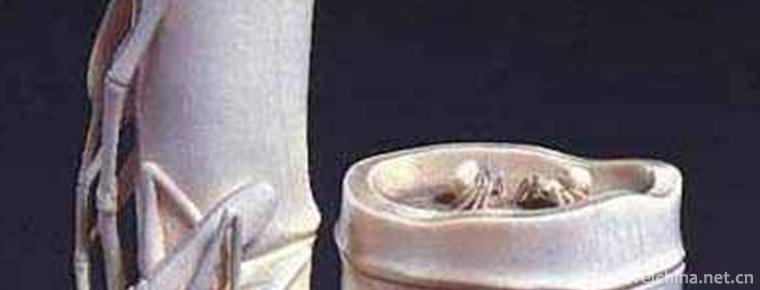
-
Lujiazui
Lujiazui is located on the Huangpu River in Pudong New Area, Shanghai.
Views: 173 Time 2018-10-12 -
South Lake
Nanhu, formerly known as Luweichi Lake, also known as Machang Lake and Luanhu Lake , is located in Nanhu District, Jiaxing City, Zhejiang Province.
Views: 237 Time 2018-12-07 -
Olympic Rowing Canoeing Park
Beijing Olympic Water Park, also known as Shunyi Water Park, is located in Chaobai River, Mapo Township, Shunyi District, Beijing. Its building area is 31850 square meters, and the number of seats is .
Views: 148 Time 2019-01-02 -
The First Sangzi in Jialing
The first Sangzi of Jialing is located in Peng'an County, Sichuan Province. Peng'an is the home of Sima Xiangru, a great poet of the Han Dynasty. It is located in the northeast of Sichuan .
Views: 120 Time 2019-01-21 -
Tian Xiang Yuan
Tianxiang Garden is located in Nanchang City, Jiangxi Province, Qingshan Hunan Avenue, formerly known as the West Lake Garden. Founded in 1976, with an area of 112 mu.
Views: 199 Time 2019-02-22 -
Museum of Xinjiang Uygur Autonomous Region
The Museum of Xinjiang Uygur Autonomous Region, located at No. 132 Northwest Road, Urumqi City, is a provincial comprehensive geographic museum..
Views: 229 Time 2019-02-25 -
Legend of Peacock Flying Southeast
Peacock Flying Southeast is the earliest long narrative poem in the history of ancient Chinese literature, and also the best folk narrative poem in ancient China. Ancient Chinese folklore stories .
Views: 256 Time 2019-05-10 -
Folk fire Min Jian She Huo
Folk society fire is a kind of folk entertainment popular in China during the Spring Festival. It is widely spread in Shaanxi, Shanxi, Hebei, Henan, Liaoning and other provinces. On May 20, 2006, Folk.
Views: 154 Time 2019-06-05 -
Manufacturing Skills of Inside Lined 1000 Layer Cloth Shoes
Inline Shoe Shoe Shoe Shoe Shoe Shoe Shop was founded in 1853 in Xianfeng, Qing Dynasty. At first, it was specially designed for the royal family and officials at all levels t.
Views: 301 Time 2019-06-07 -
Quyi
Quyi is the general name of all kinds of "rap art" of the Chinese nation. It is a unique art form formed by the long-term development of folk oral literature and singing art. According to in.
Views: 158 Time 2019-06-11 -
Yicheng Qinshu
Yicheng Qinshu is called "Qinshu" because its main accompaniment instrument is Yangqin. Yicheng Qinshu is an ancient traditional folk art. Legend has it that it originated in the late Yuan D.
Views: 281 Time 2019-07-13 -
Jihua Temple Music
The music of Zhihua Temple and Beijing originated from the music of court etiquette in Ming Dynasty. It is the only kind of music inherited from generation to generation in China's existing ancient mu.
Views: 176 Time 2019-08-03
